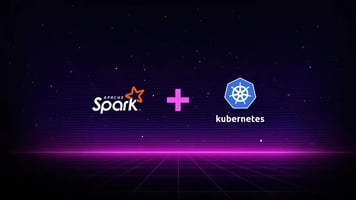Future-proofing Predictive Maintenance with MLOps and continuous AI
The most Innovative companies are always considering a variety of new techniques to include real-time analytics on streaming data into their ecosystems. In particular, these technologies allow us to ship software to production in minutes with maximum reliability, while shortening the development cycles, increasing deployment velocity, and dependable releases.
Innovation paves the way to many valuable use cases: predictive maintenance, operations optimization, financial services risk reporting and cybersecurity, among others.
The challenge: Predictive maintenance
Predictive maintenance is an example of real-time use cases that is critical for modern enterprises since organizations require equipment to run continuously and in a cost effective way. Before the adoption of digital manufacturing practices, factory managers were required to manually schedule (corrective or preventive) maintenance operations and repair machine parts.
McKinsey and Company found that AI based predictive maintenance typically generates a 10% reduction in annual maintenance costs, up to a 25% downtime reduction and a 25% reduction in inspections costs.
The role of preventive maintenance is to avoid catastrophic failures while managing unnecessary downtime. It is a proactive maintenance method looking to predict machine failure and proposes to balance the two approaches by enabling just in time component replacement.
How Fyrefuse and MLOps can help companies across industries to improve business performance
Predictive Maintenance is all about predicting failures and performing the right maintenance routines in order to reduce costly equipment downtimes. To do that, a large amount of data is required from the most sparse data sources (IoT devices and real-time streaming data platforms). Then, there’s the need for an orchestration platform that can deploy these data into specific analytics platforms ready to be analyzed.
Fyrefuse offers the possibility to use reusable data ingestion pipelines with zero coding swiftly. The platform provides real time monitoring of multiple concurrent executions and eliminates undocumented data flows.
Real-time monitoring and analysis of critical variables allow immediate interventions to solve issues before they arise. Additionally, time series analysis can highlight anomalies and deviations. While these deviations may seem acceptable when examined in isolation, time series analysis can identify abnormal patterns and predict future problems.
Utilizing the power of Fyrefuse, organizations can now easily ingest, store, process, and analyze unlimited volumes and varieties of sensor data; use powerful processing and analytics tools across data in motion as well as static data; and leverage machine learning capabilities across petabytes of data to drive real-time predictive maintenance.
Conclusion
Earlier detection can help dramatically reduce equipment downtime and maintenance costs, enabling increased production and increased profit margins for the asset owner.
Fyrefuse, through the combination with MLOps and AI, is helping companies in their challenge towards downtime reduction due to equipment failures and, improving product quality and customer satisfaction.
.png?height=200&name=Untitled%20presentation%20(2).png)
.webp?height=200&name=img-01%20(2).webp)







